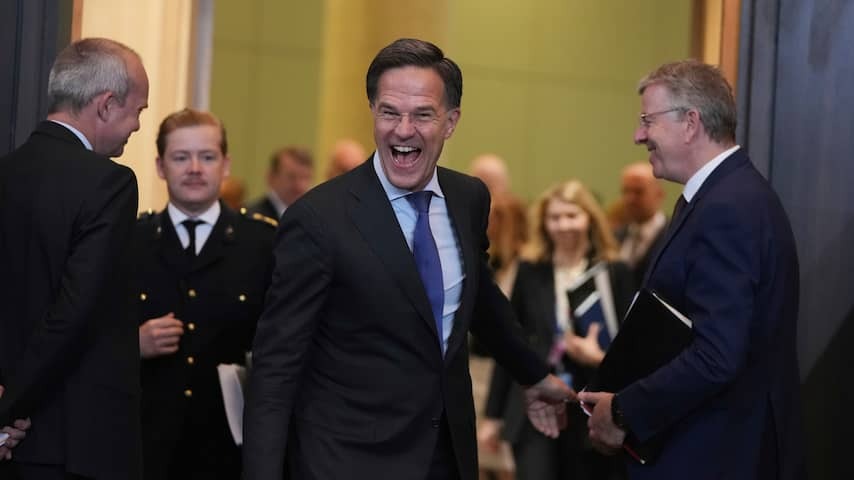
A reporter asks Rutte what he says to European citizens who would rather see all that money spent on schools and healthcare, instead of on weapons. “We have been living in a different world for a few years now,” says Rutte.
He emphasizes the Russian invasion of Ukraine more than three years ago. Russia can produce more weapons in a short time than NATO countries in a year, he warns. “It sounds a bit exaggerated, but otherwise, we will have to start learning Russian.”
“We are wealthy communities, we can do this.”
It will take several years to move towards that 3.5 percent, says Rutte. “That is not possible within a year.” He does not yet want to say how long NATO countries would have to meet the proposed requirement. That is a detail for in 3 weeks, at the NATO summit.
Rutte also spoke with the Ukrainian Minister of Defense today. In it, the continued support for Ukraine was emphasized, he says.
Journalists ask many questions about the content of all the plans, but do not really get an answer. Rutte repeats that he does not want to go into details.
That 3.5 percent for real defense spending is a replacement for the 2 percent that NATO countries now have to spend on defense.
Rutte is not yet going into details, he says. He, therefore, does not yet want to say what that 3.5 percent of ‘real defense spending’ should be spent on.
Those requirements will also apply to the US, Rutte answers to questions from journalists.
With that plan, Rutte hopes to keep US President Donald Trump satisfied. Trump demands that EU countries spend 5 percent of their GDP on defense.
The countries still have to agree in three weeks on how that money will be spent. Rutte has a plan for this: spend 5 percent of GDP on defense. 3.5 percent then goes to ‘real defense spending’ and 1.5 percent to other defense-related matters such as infrastructure and mobility.
Rutte says that countries have agreed on capacity decisions. That includes what the defense money is spent on, such as long-range missiles, air defense, and logistics.